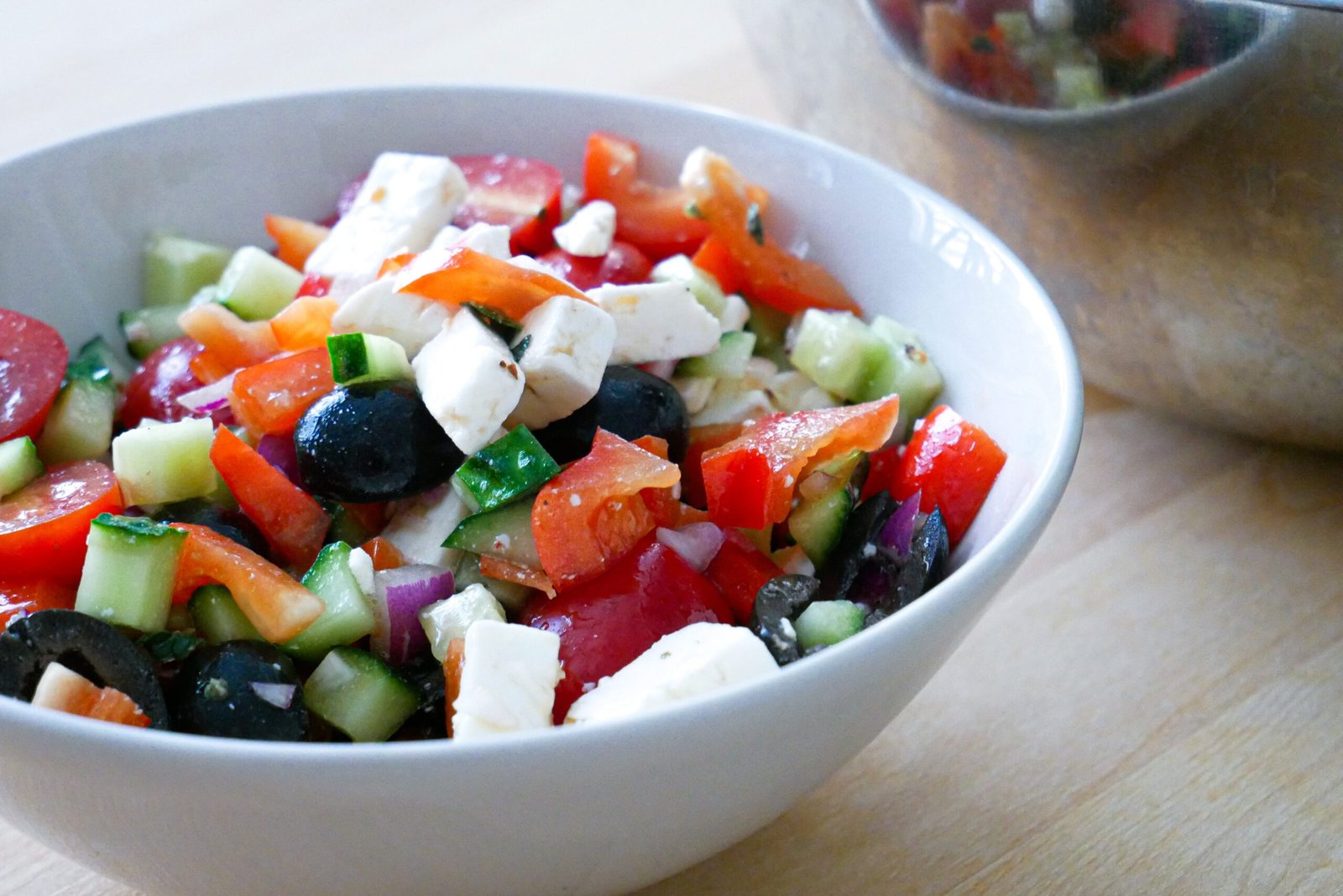Taste Greece With Balsamic Greek Salad

Introduction
A little different Greek Salad With Balsamic Dressing – an iconic dish that resonates with the heart of Mediterranean cuisine. It’s tastes slightly different than the authentic greek salad but I really enjoy the twist in this dressing!
From the sun-soaked shores of Greece to global dinner tables, this salad has captivated palates with its harmonious blend of flavors.
Flavors and Ingredients of Balsamic Greek Salad
At the core of Balsamic Greek Salad lies a careful selection of ingredients, each contributing to the symphony of flavors. Crisp cucumbers, fresh tomatoes, and bell peppers form the foundation, infusing the salad with a burst of freshness.
The creamy Feta cheese provides a luxurious contrast, while olives contribute a bold, briny essence. What elevates this salad even more is the finishing touch of the balsamic dressing.
Nutritional Value and Health Benefits
Beyond its sensory allure, Balsamic Greek Salad boasts an impressive nutritional profile. The medley of vegetables imparts vitamins, minerals, and antioxidants that contribute to overall well-being.
Feta cheese, a source of protein and calcium, enriches the dish, while heart-healthy olive oil adds a dose of monounsaturated fats. The synergy of ingredients creates a salad that doesn’t just make your stomach happy but nourishes the whole body as well.
Historical Roots and Culinary Evolution
Tracing the history of Balsamic Greek Salad is akin to embarking on a culinary time travel. The dish’s origins can be traced back to ancient Greece, where the concept of simple yet flavorful combinations was born.
Over centuries, the salad has remained a steadfast presence, adapting to cultural changes and culinary trends while retaining its essence. What was once a humble ensemble of local produce has evolved into an internationally recognized delight.
Culinary Adaptations and Modern Twists
In today’s culinary landscape, Balsamic Greek Salad continues to evolve. Chefs and home cooks alike embrace its versatility, experimenting with ingredients while respecting its traditional foundation.
Variations may include grilled vegetables, nuts, or even a hint of citrus for a contemporary twist. This adaptability speaks to the salad’s enduring appeal—it can be both a canvas for innovation and a homage to tradition.
My own twist in this case would be adding balsamic vinegar instead of the usual red wine vinegar.
Conclusion
Balsamic Greek Salad, with its symphony of flavors and cultural heritage, stands as a testament to the timeless allure of Mediterranean cuisine.
It invites us to explore beyond the surface and delve into the layers of history, ingredients, and techniques that have shaped its existence. As you savor each bite, remember that you’re not just enjoying a salad; you’re partaking in a culinary legacy that bridges the past and the present.
Balsamic Greek Salad
Ingredients
For the salad
- 1 large cucumber or 2 smaller ones
- 250 g cherry tomatoes
- 1-2 small red onions
- 150 g pitted black olives
- 1 bell pepper
- 150 g feta cheese
For the sauce
- 1 tbsp balsamic vinegar
- 1 tbsp lemon juice
- 2 garlic cloves
- 2 tsp fresh or dried oregano
- 1-2 tsp salt taste for the best result
- 1 tsp black pepper
- 2 tbsp olive oil
Instructions
- Chop and add the cucumber, tomatoes, bell pepper, onion, olives, and feta cheese to a large mixing bowl.
- In a smaller mixing bowl, add the balsamic vinegar, lemon juice, garlic, oregano, salt, and pepper. Slowly add the olive oil and whisk until the dressing is emulsified.
- Drizzle the dressing on the salad and gently stir to combine. Season with additional salt and pepper, if needed.





